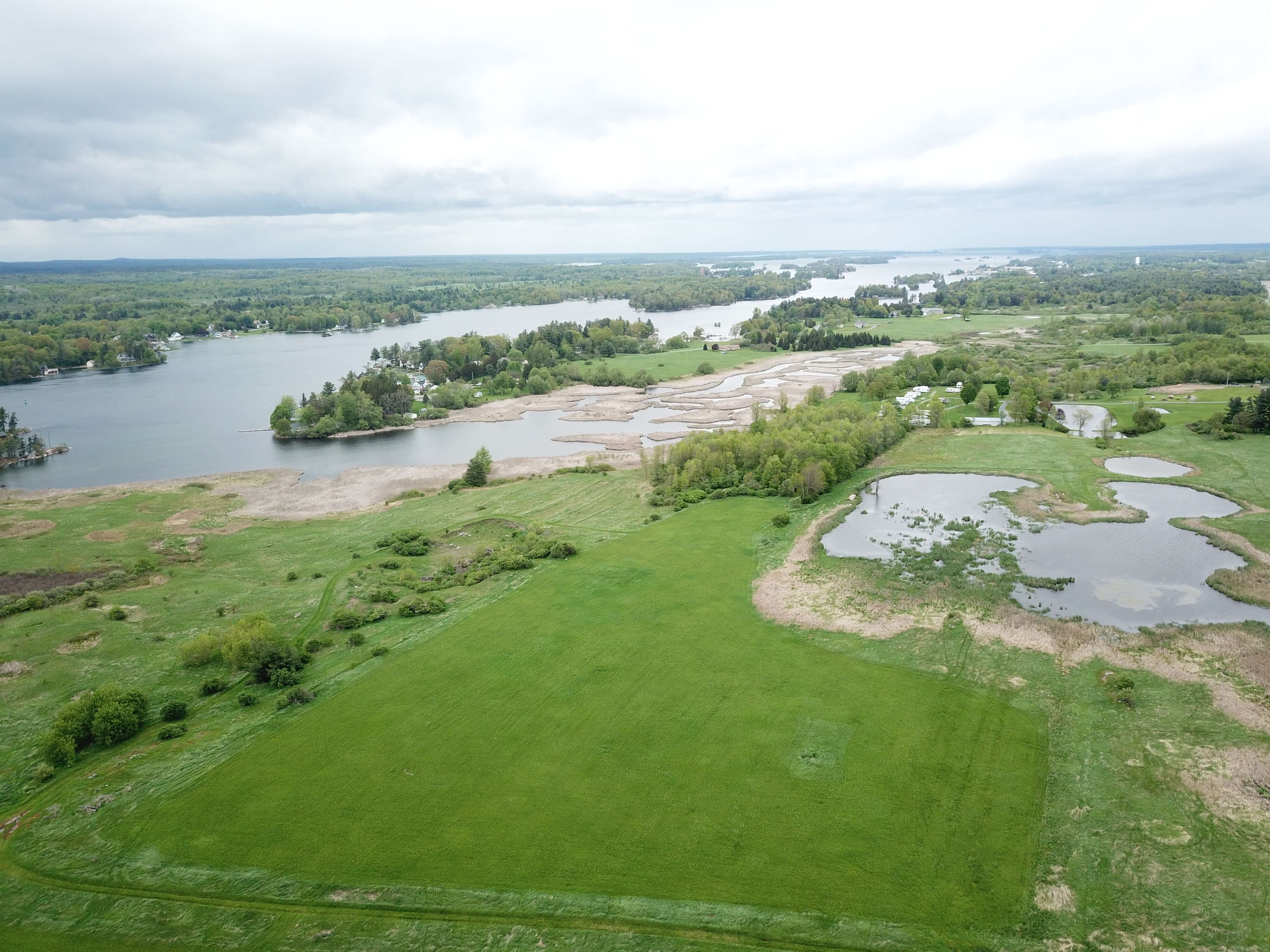NAWCA Funds $6 Million Wetland and Grassland Restoration Along St. Lawrence River
A critical nesting area and stopover for migratory birds, the grant will also create habitat for northern pike, black terns and other imperiled birds
A critical nesting area and stopover for migratory birds, the grant will also create habitat for northern pike, black terns and other imperiled birds

Ducks Unlimited (DU) is partnering with Indian River Lakes Conservancy, St. Lawerence Land Trust, Tug Hill Tomorrow Land Trust, and Thousand Island Land Trust (TILT) on a $5.8 million multi-phase protection and restoration project in the St. Lawrence River Valley (SLRV).
The conservation work, funded by a North American Wetlands Conservation Act (NAWCA) grant, will permanently protect 16 properties. A pair of New York State Department of Environmental Conservation (NYDEC) Waterfowl Management Areas—Lakeview and Wilson Hill (200 acres) - will also be conserved.
“The total impact to the St. Lawrence River Valley once this phase of the project is completed will be over 12,000 acres,” said DU Regional Biologist Mathew Wagner. “There is a significant amount of development that has taken place in this area over the years, so it’s critical for the future of Atlantic Flyway waterfowl and many other animal species, that we preserve as much native habitat as possible.”
The St. Lawrence River Valley is home to some the most important wetland and grasslands habitat for migratory birds in the Atlantic Flyway. Around 400,000 acres of grasslands and another 150,000 acres of wetlands can be found on the U.S. side of the SLRV (the St. Lawrence River cuts through portions of Canada and the U.S. before reaching the Atlantic Ocean).
A critical nesting area for Atlantic Flyway waterfowl, particularly mallards, the SLRV is a mix of shoreline marshes, bays, open water, and wetlands. The shallow wetlands house many nutrient-rich aquatic plants that ducks and other water-dependent birds rely on for food and refuge. During the spring and fall migrations, it’s estimated the SLRV and eastern Lake Ontario see upwards of 9 million waterfowl use days per year.
"The Thousand Islands Land Trust is grateful to participate in such a robust partnership with Ducks Unlimited and our neighboring land trusts,” said Spencer Busler, assistant director at TILT. “For nearly two decades, the NAWCA program has been a driving force in conserving land in the St. Lawrence River Valley. Wetlands protection and conservation partnerships serve a dual purpose, safeguarding not only our environment but also acting as powerful catalysts for economic prosperity. Through the protection of these ecosystems, we secure clean water and natural flood controls while also generating employment opportunities in sectors such as eco-tourism, agriculture and fisheries. Saving wetlands is an investment in both the future of our planet and our economic well-being."
At Lakeview WMA, a 3,461-acre tract along the eastern shoreline of Lake Ontario, a lack of fluctuating water levels has negatively impacted the productivity of the marsh. Dense cattail stands have taken hold, reducing wildlife habitat and food availability. DU and NYDEC are designing ways to re-connect natural water flow throughout the marsh, which will result in increased use by fish, wildlife and outdoorsmen and women. Once the work is completed, it will benefit spawning northern pike and other fish species. Nesting for black terns and other migratory birds, including waterfowl, will also be more widely available when wetland enhancements are finished.
Wilson Hill WMA is situated along the St. Lawrence River. It spans 4,000 acres and is a mix of open water pools, forest, and meadows. With its proximity to the St. Lawerence, Wilson Hill’s grasslands are an ideal nesting location for waterfowl, plus the wetland provide refuge for ducks and geese during fall and spring migrations. The marsh supports a diverse group of migratory birds as well as raptors. Up to 20 different species of waterfowl—puddle ducks, divers, and Canada geese—have been observed on the WMA at one time. Project designs will also benefit nesting upland birds and state threatened/endangered species, such as the black tern, Blanding’s turtle, short-eared owl, least bittern, pie billed grebe and northern harrier.
“The work DU and our partners are doing in the SLRV will preserve nesting areas and wetlands for waterfowl in perpetuity,” Wagner said. “Getting different conservation organizations to work together like this is the key to protecting this critical habitat.”
Ducks Unlimited uses cookies to enhance your browsing experience, optimize site functionality, analyze traffic, and deliver personalized advertising through third parties. By continuing to use this site, you agree to our use of cookies. View Privacy Policy